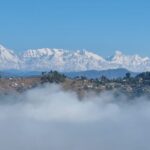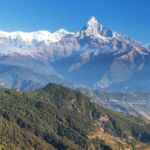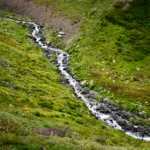The 240-year-old monarchy was overthrown on May 28, 2008, when the newly elected Constituent Assembly proclaimed Nepal the Federal Democratic Republic. In Nepal today, the govt is led by the Prime Minister, who also is the pinnacle of State but still after quite a decade of monarchy being overthrown from Nepal, the people of Mustang have their own “KING”, known and revered as “Mustangi Raja”.
Upper Mustang, originally the dominion of Lo, is the northernmost portion of Nepal’s Mustang District. The Upper Mustang is one of the world’s best-conserved regions because it had been a confined kingdom and a demilitarised zone until 1992. Therefore the bulk of the population still speaks traditional Tibetan dialects. due to the area’s relative isolation from the skin world, Tibetan culture has been preserved. Tourism, farming, and trade are the three main economic drivers in Mustang.
The Upper Mustang structure is the upper two-thirds of the Mustang District in Nepal’s Gandaki Province. The three rural municipalities that structure this region are Lo Manthang, Dalome, and Baragung Muktichhetra.
Lo Manthang, from the time of its founding in 1380 by Ame Pal, who oversaw the building of the town wall and plenty of the still-standing structures, Lo Manthang served because of the walled capital of the dominion of Lo. After the Shahs of Gorkha created Nepal within the 18th century from a variety of small kingdoms, Lo became a dependent nation but preserved its hereditary kings. This arrangement persisted for the duration of Nepal’s monarchy, which resulted in 2008 when Jigme Dorje Palbar Bista had his title removed. The same thing happened to his protector King Gyanendra, although the raja or gyalpo of Mustang was the 25th in an exceedingly direct line of kings that went back to 1380 AD. Since Prithvi Narayan, Gyanendra was only the twelfth Shah to rule.
Locals of Lo Manthang -the heart of Mustang appraise their “monarch” because the area’s protector. Despite the dissolution of the monarchy, the locals claim and believe they still have faith in their king.
Even after the demise of the King of Lo, or Upper Mustang, Jigme Dorje Palbar Bista, on December 16, 2016 A.D. who had calmly controlled his country for quite fifty years and was 86 years old, locals still wholeheartedly followed the trail paved by their king for his or her wellbeing. One of the prime examples that depict the respect for the king is that Yartung Parba the most important festival in Lo Manthang accustomed be celebrated with the king’s permission but, after his demise, nobody participated in the festival in his absence.
Bista had not declared himself to be king. Following the collapse of the Nepalese monarchy, he stated himself because a regular being. I’m not a monarch. it is a recompense for the noble deeds of my ancestor. And as a result of them, I’ve got won respect,” he stated.
The King- Bista was referred to as the Mustang Raja in Nepali, one amongst four “petty kings” (local tyrants in Bajhang, Salyan, and Jajarkot were also among them) who
maintained federal agency despite the incorporation of their lands into the developing nation-state of Nepal within the middle of the 18th century. From 1961 until 2008, when Nepal changed from a Hindu monarchy to a secular republic, these rulers were recognized by Nepali law.
The Tibetan name for Bista was Lo Gyalpo, which conveyed respect and deference. Jigme Dorje Palbar Bista’s status within the lives of the Loba people of Upper Mustang was unaffected by the very fact that the Nepali government had formally deprived him of his raja title.
In a dynasty of kings that goes back to the late 14th century and therefore the establishment of the dominion by a western Tibetan prince by the name of Amepal, Bista was the 25th. After his father gave up the ghost in 1964, while he was in his mid-thirties, Bista took on the title of Lo Gyalpo. He was the youngest child of his father.
Before the political upheavals of 1959, in 1950, Bista married Sidol Palwar, a cultured, elegant woman who journeyed from Shigatse, Tibet, to Lo as a bride. Despite not having any biological children of their own, the couple adopted their cousin Jigme Singe Palbar Bista and raised him as their son and heir.
The stationing of Chushi Gangdruk, the Tibetan Resistance Army, in Mustang from 1961 to 1974, the opening of Lo to foreign tourists in 1992, the decade-long war (1996-2006) and its attendant effects on all aspects of life in rural Nepal, even in an exceeding district that saw little direct conflict, the top of the Nepali monarchy in 2008, the recent completion of a hydroelectric project, and also the recent completion of a road project, were just some of the numerous political, economic, and sociocultural transition.
Bista has also lived to witness how the environment of Mustang, a fancy social ecology that balances irrigated agriculture, pastoralism, and trade, has been suffering from temperature change. As parts of Mustang’s glaciers recede, two of Lo’s communities have recently been evacuated thanks to water constraints. This, along with the recent discovery of uranium resources in Upper Mustang, highlights a number of the geopolitical and environmental challenges this area is currently experiencing.
Additionally, Bista saw the tremendous internal changes that education- and economically-driven emigration led to within the towns of Mustang. Today, the quantity of Loba living in urban areas like Queens, New York, urban Nepal, and India rivals that of Lo.
The future of Upper Mustang is very important to Jigme Singe Palbar Bista and other members of this generation of Mustang royalty. Even in the absence of continuous recognition of the local monarchy by the Nepali state, the family continues to play a major role in Lo’s social life. However, the king’s passing signals the top of an era. “Never migrate from the hamlet and also the district,” were supposedly his last instructions to his relations.






